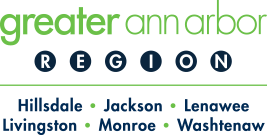We found this extremely comprehensive article online on how to write a successful cover letter by Alison Doyle. It’s too good not to share with our job seekers out there! Enjoy!
Do you need to write a cover letter to apply for a job? In most cases, the answer is yes. Your cover letter may make the difference between obtaining a job interview or having your resume ignored, so it makes good sense to devote the necessary time and effort to writing effective cover letters.
Here’s all the information you need to write a cover letter that will get your application noticed. Review these tips for what to include in a cover letter, how to format it, and examples of many different professionally written cover letters.
If you take it one step at a time, you’ll soon be an expert at writing cover letters to send with your resume when you apply for jobs.
What is a Cover Letter?
Before you start writing a cover letter, you should familiarize yourself with the document’s purpose. A cover letter is a document sent with your resume to provide additional information on your skills and experience.
The letter provides detailed information on why you are qualified for the job you are applying for. Don’t simply repeat what’s on your resume, rather include specific information on why you’re a strong match for the employer’s job requirements. Think of your cover letter as a sales pitch that will market your credentials and help you get the interview. These quick tips will ensure your cover letter makes the best impression on the person who is reviewing it.
A cover letter typically accompanies each resume you send out.
Employers use cover letters as a way to screen applicants for available jobs and to determine which candidates they would like to interview. If an employer requires a cover letter, it will be listed in the job posting. Even if the company doesn’t ask for one, you may want to include one anyway. It will show you have put some extra effort into your application.
The Different Types of Cover Letters
There are three general types of cover letters. Choose a type of letter that matches your reason for writing.
- The application letter which responds to a known job opening (see cover letter samples)
- The prospecting letter which inquires about possible positions (see inquiry letter samples)
- The networking letter which requests information and assistance in your job search (see networking letter examples)
When you are applying for a job that has been posted by a company that’s hiring, you will be using the “application letter” style.
What to Include in Your Cover Letter
A cover letter should complement, not duplicate, your resume. Its purpose is to interpret the data-oriented, factual resume and add a personal touch to your application for employment. Find out more about the differences between a resume and a cover letter to make sure you start writing your cover letter with the correct approach.
A cover letter is often your earliest written contact with a potential employer, creating a critical first impression. Something that might seem like a small error, like a typo, can get your application immediately knocked off the list. On the other hand, even if your cover letter is error-free and perfectly written, if it is generic (and makes no reference to the company, or to any specifics in the job description) it is also likely to be rejected by a hiring manager.
Effective cover letters explain the reasons for your interest in the specific organization and identify your most relevant skills or experiences. Determine relevance by carefully reading the job description, evaluating the skills required and matching them to your own skills. Think of instances where you applied those skills, and how you would be effective in the position available.
Review a list of what to include in a cover letter for a job before you get started.
What to Leave Off Your Cover Letter
There are some things that you don’t need to include in the cover letters you write. The letter is about your qualifications for the job, not about you personally. There is no need to share any personal information about yourself or your family in it. If you don’t have all the qualifications the employer is seeking, don’t mention it.
Instead, focus on the credentials you have that are a match. Don’t mention salary unless the company asks for your salary requirements. If you have questions about the job, the salary, the schedule, or the benefits, it’s not appropriate to mention them in the letter.
One thing that’s very important is to not write too much. Keep your letter focused, concise, and a few paragraphs in length. It’s important to convey just enough information to entice the hiring manager to contact you for an interview. If you write too much, it’s probably not going to be read.
Customize Your Cover Letter
It is highly important for your cover letter to be tailored to each position you are applying to. This means more than just changing the name of the company in the body of the letter.
Each cover letter you write should be customized to include:
- Which job you’re applying for (include the job title in your opening paragraph)
- How you learned about the job (and a referral if you have one)
- Why you are qualified for the job (be specific)
- What you have to offer the employer, and why you want to work at this specific company (match your skills to the job description, and read up on the organization’s mission, values and goals to mention in your letter)
- Thank you for being considered for the job
Cover Letter Writing Guidelines
Here’s an outline of the items that should be included in every cover letter. Before you get started, it can be helpful to review some cover letter samples, just so you have a visual of how everything fits on the page. These cover letter examples, both written and email, are designed for a variety of different types of job applications and employment inquiries. Do be sure to take the time to personalize your letter, so it’s a strong endorsement of your ability to do the job for which you’re applying.
Header
A cover letter should begin with both your and the employer’s contact information (name, address, phone number, email) followed by the date. If this is an email rather than an actual letter, include your contact information at the end of the letter, after your signature.
Your contact information should include:
First and Last Name
Street Address
City, State Zip
Phone
Email
Salutation
Begin your cover letter salutation with “Dr./Mr./Ms. Last Name.” If you are unsure if your contact is male or female, you can write out their full name. If you do not know the employer’s name, simply write, “Dear Hiring Manager.” This is better than the generic and formal, “To Whom It May Concern.”
Review information on how to choose the right cover letter greeting to select one that works for the job and company you’re applying to.
Introduction
Begin your introduction by stating what job you are applying for. Explain where you heard about the job, particularly if you heard about it from a contact associated with the company. Briefly mention how your skills and experience match the company and/or position; this will give the employer a preview of the rest of your letter. Your goal in the introduction is to get the reader’s attention. To get started, see examples of engaging opening sentences for cover letters.
Body
In a paragraph or two, explain why you are interested in the job and why you make an excellent candidate for the position. Mention specific qualifications listed in the job posting, and explain how you meet those qualifications. Do not simply restate your resume, but provide specific examples that demonstrate your abilities.
Remember, actions speak louder than words, so don’t just “tell” the reader that you are, for example, a great team player with strong communication skills and an excellent attention to detail. Instead, use tangible examples from your work experience to “show” these traits in action. Here’s more information on what to include in the body section of a cover letter.
Closing
In the closing section of your cover letter, restate how your skills make you a strong fit for the company and/or position. If you have room (remember, just like your resume, your cover letter should be no longer than one page – here’s more information on how long a cover letter should be.) you can also discuss why you would like to work at that specific company.
State that you would like the opportunity to interview or discuss employment opportunities. Explain what you will do to follow-up, and when you will do it. Thank the employer for his/her consideration.
Signature
Use a complimentary close, and then end your cover letter with your signature, handwritten, followed by your typed name. If this is an email, simply include your typed name, followed by your contact information, after the complimentary close.
Format Your Cover Letter
Your cover letter should be formatted like a professional business letter. The font should match the font you used on your resume, and should be simple and easy to read. Basic fonts like Arial, Calibri, Georgia, Verdana, and Times New Roman work well. A font size of 10 or 12 points is easy to read. Standard margins are 1” on the top, bottom, and left and right sides of the page.
Add a space between the header, salutation, each paragraph, the closing, and your signature. You can reduce the font and margin sizes to keep your document on a single page, but do be sure to leave enough white space for your letter to be easy to read.
Follow these cover letter formatting guidelines to ensure your letters match the professional standards expected by the hiring managers who review applications.
Edit and Proofread Your Cover Letter
Remember to edit and proof your cover letter before sending it. It may sound silly, but make sure you include the correct employer and company names – when you write multiple cover letters at once, it is easy to make a mistake. Printing out and reading the letter aloud is a good way to catch small typos, such as missing words, or sentences that sound odd.
Always double-check the spelling of your contact’s name, as well as the company name. Here are more tips for proofreading a cover letter. If possible, enlist a friend or a family member to help proofread your cover letter, as two pairs of eyes are better than one and even professional proofreaders don’t always catch their own mistakes.
Good luck!
Source: SPARK







I like how the author organized his thoughts in addition to the visual component.